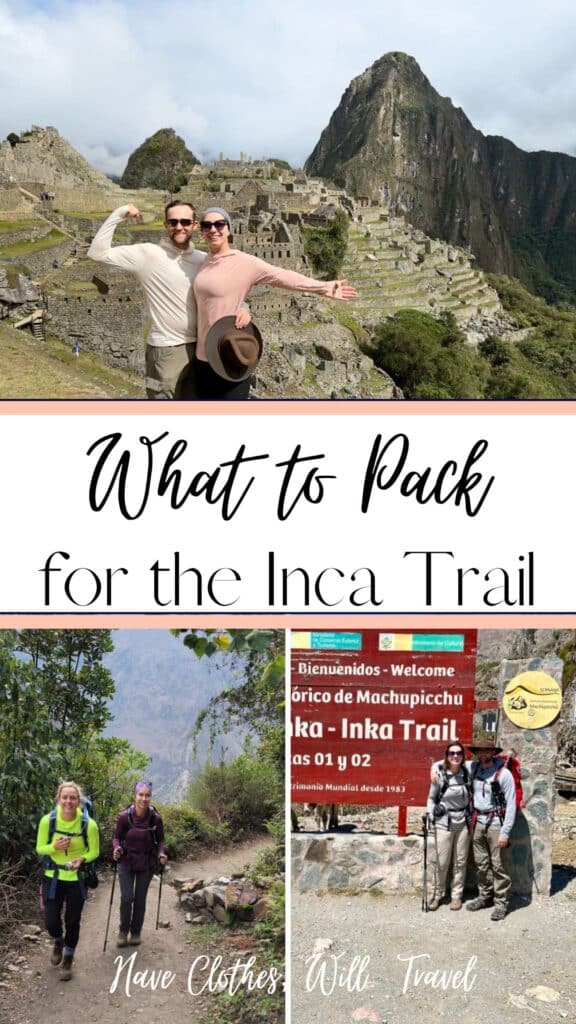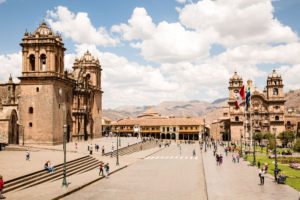Ultimate Inca Trail Packing List for Women & Men: DON’T Forget These Things
This is my tried-and-true Inca Trail packing list, which I used along with everyone who came with me on the Have Clothes, Will Travel Inca Trail Tour in November! This packing list will work no matter what time of year you are hiking the Inca Trail. I will be making suggestions for both the dry and rainy season. (We’ve been to Peru in both!)
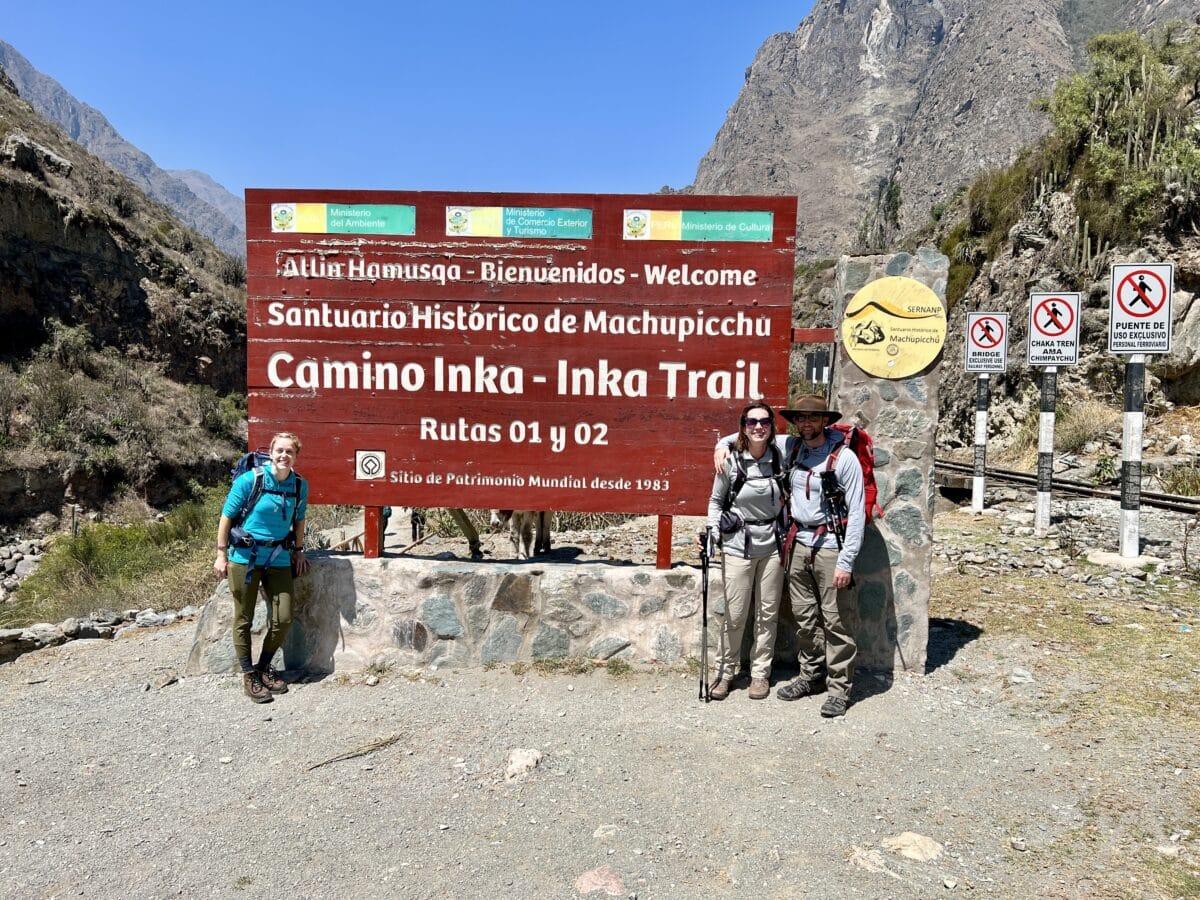
Of course, packing correctly for any trip is important, but when it comes to the Inca Trail, a comprehensive packing list is even more important. The trail is rather challenging, covering about 26 miles over four days and reaching altitudes of up to 13,800 feet. You do not want to have too little packed, but you also do not want to overpack, as you (or your porter) will have to carry that weight over four days of hiking. So, everything you pack needs to be essential!
This post will include the must-take essentials for your Inca Trail hike, some nice things (but we didn’t necessarily need), and things that you can leave at your Cusco hotel.
I will also include a FREE Inca Trail Packing List Printable at the end.
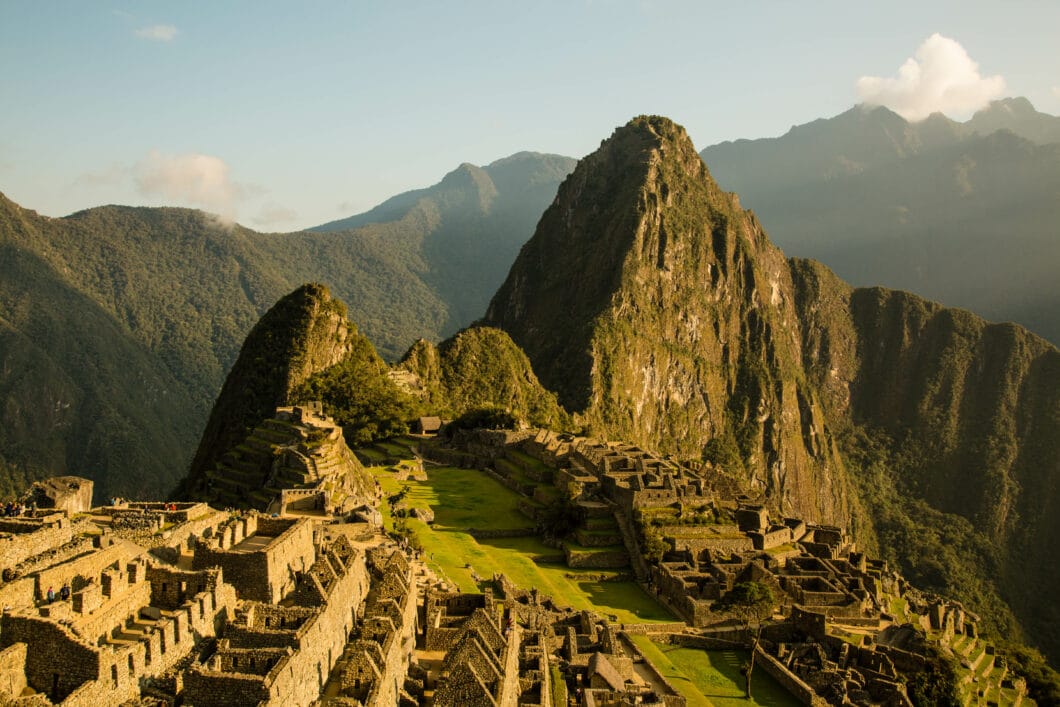
*Disclosure: some of these links are affiliate links. Meaning, if you click a link and make a purchase, Have Clothes, Will Travel gets a very small commission at no extra cost to you. Thank you for supporting the brands that make this blog possible!
Before You Pack… Check With Your Inca Trail Tour Company!
Everyone who hikes the Inca Trail will need a guide and a permit in order to hike it. This is not a trek you can do independently. (Our hike was organized via Baboo Travel.) Each tour company will also provide a porter and a small duffel bag to pack your belongings in that you want the porter to carry. The tour companies will also provide your food and tents. So, you won’t have to worry about carrying all of your belongings and gear for this hike!
The weight limit per person for which a porter will carry will vary depending on your tour company/group size. 20 KG is the max weight a porter can legally carry. Then, the allowance per person will depend on the size of your hiking group. 5 KG is the typical weight allowance for personal items (in that duffel bag) for the majority of hiking companies. But again, double-check with yours before you pack!
Anything that is not being used on the hike can be left at your hotel in Cusco or at your tour company’s office. You won’t have to lug everything you packed for your entire Peru trip.
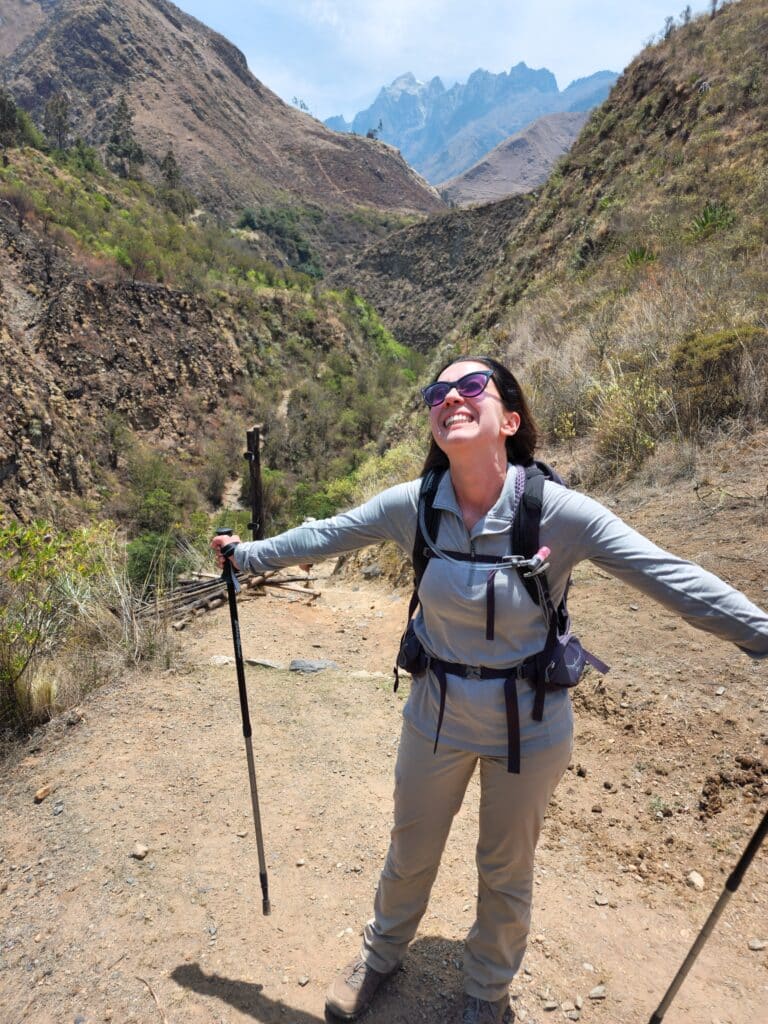
Get a Day Backpack
Then, you will have your own day pack that you will carry throughout your hike with the things you will want throughout the day, such as extra layers, snacks, water, sunscreen, camera, etc. This is up to you how much you want to carry. Most people on our hike found the 24L backpack to be sufficient. I personally use a 32L because I carry my camera equipment as well (more on that later).
Osprey was the brand of choice for backpacks all around, and we were all happy we had backpacks with hydration packs. This encouraged us to drink more water throughout the hike vs. just having a water bottle along. The tour company provided clean, filtered water, so there was no need for us to have a water bottle with a filter along. (Although we do have the Lifestraw bottles, and those work great, too.)
Note: If you can, I recommend going to a hiking store like REI to get properly fitted for your backpack before you go. Having a comfortable day pack is essential to having a successful Inca Trail hike! It is also important that you use your backpack frequently prior to your hike.
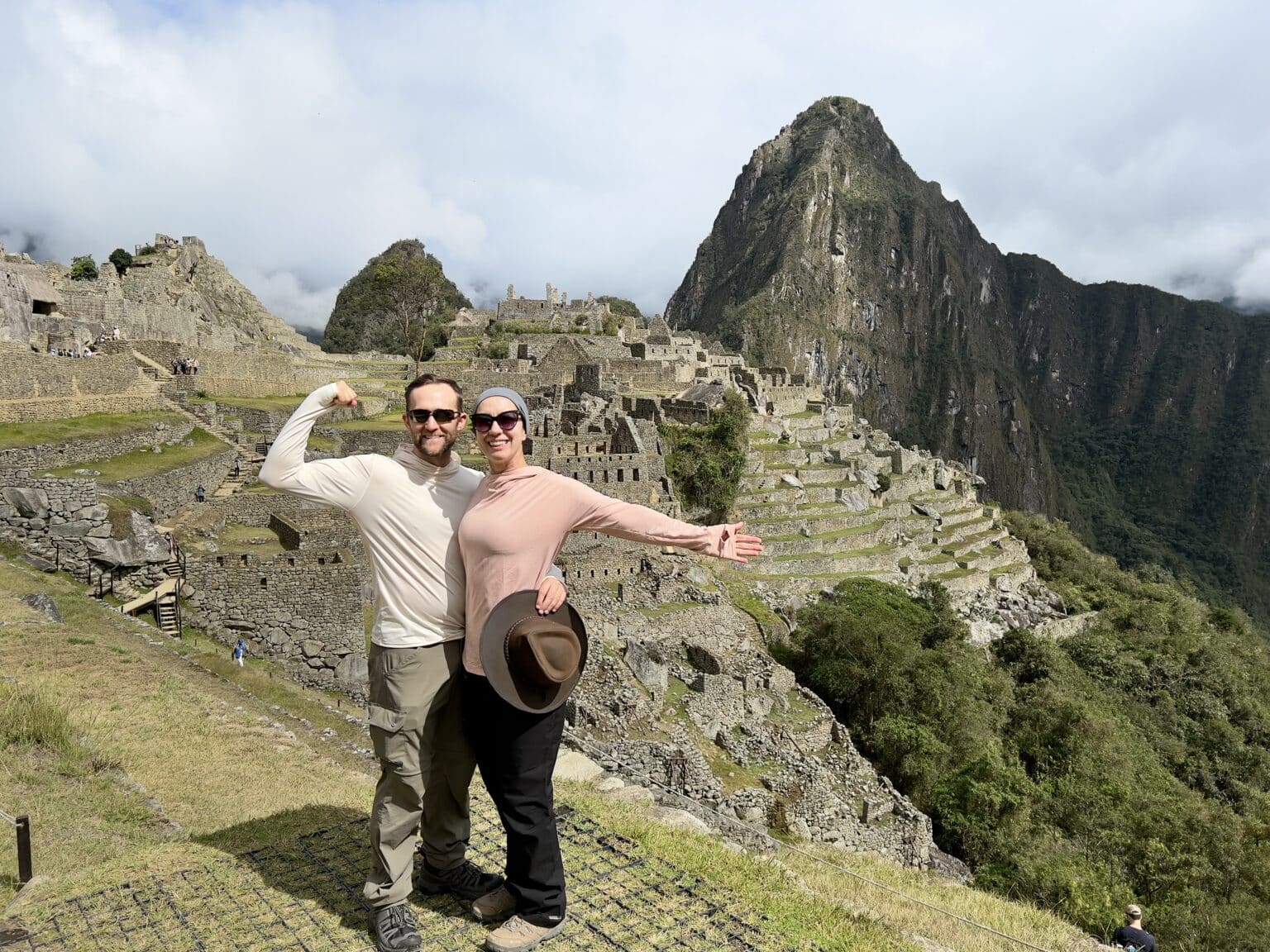
Inca Trail Essentials Packing List
Hiking Boots
Other than a comfortable daypack, the most important thing you need for this hike is a good pair of hiking boots with ankle support. It’s a good idea to have water-resistant boots, too, so you don’t end up with soggy socks if it starts to rain. Again, I highly recommend going to a hiking store like REI to make sure you are getting the proper pair of hiking boots. They also have a great return policy if you find they don’t work out.
It’s also super important that your hiking boots are broken in before you go on this hike. There is nothing worse than getting blisters on your first day! We wore the same boots for all of our training hikes leading up to the Inca Trail, so we knew we would be comfortable in them for 4 days straight.
We’re both fans of Oboz Sawtooth hiking boots. However, hiking boots are a very personal thing! What works for us may not work for you.
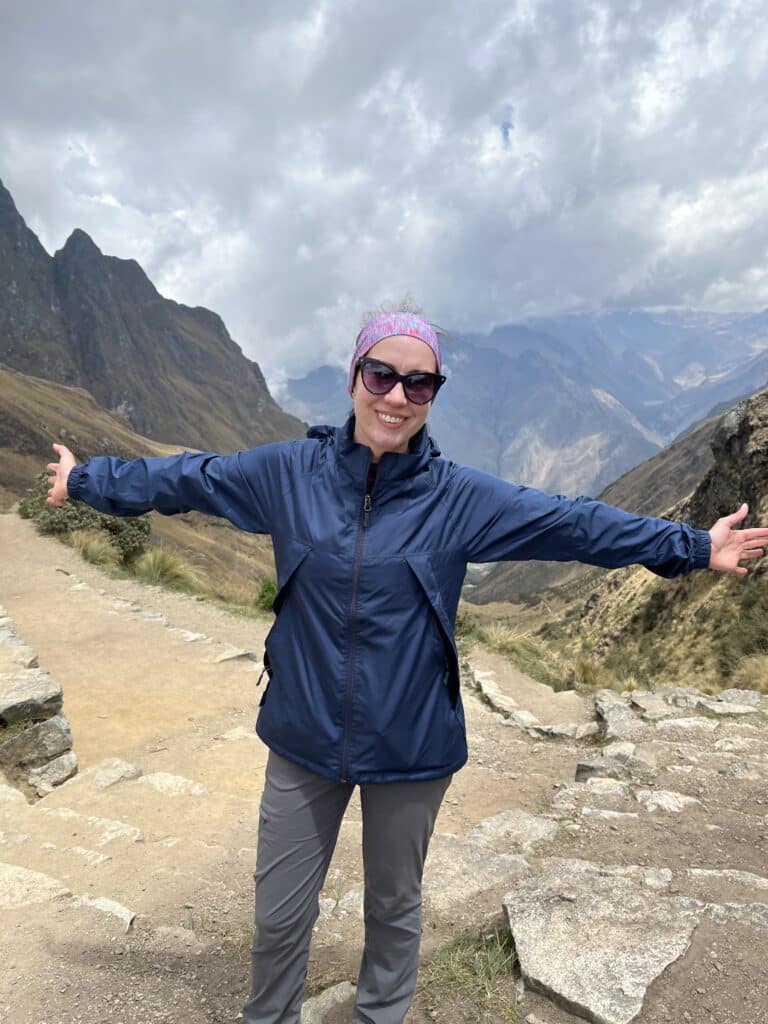
Hiking Clothes
Whether you’re hiking in the rainy or dry season, the temperature on the Inca Trail will be roughly the same. The average temperature will range from the 60s to 70s Fahrenheit during the day to the low 40s to upper 30s at night, so layering is key!
This is personally what we brought for clothes and recommend:
- 1 Wind and rainproof jacket, ideally one with a hood. I use this windbreaker because I don’t get very cold and I like all the pockets. However, my husband is a fan of using packable down jackets like these.
- 1 Thick flannel shirt or fleece to layer under your jacket. It’s better to have garments for layering vs one heavy jacket.
- 2 pairs of hiking pants. My husband likes these KUHL ones, and I am a fan of these Eddie Bauer ones.
- 3-4 hiking shirts, all in moisture-wicking material. We used these shirts and these shirts for all our hikes, and we love them. We recommend wearing long-sleeved shirts, as they provide an extra layer of sun and bug protection.
- 1 set of thermal layers. We slept in these and wore them under our clothes on one especially cold morning.
- 1 hat/beanie for the mornings and nights.
- 1 pair of lightweight gloves. We used these.
- 4-6 pairs of long, wool hiking socks. If you can stomach the price tag, alpaca wool hiking socks are the way to go. Also, in my opinion, it’s better to overpack socks!
- 4-6 pairs of moisture-wicking underwear. (Also can’t have too many undies!)
- 1-2 mid or low-impact sports bras. I use these.
- A sunhat is a good idea if you have the space. Zac brought along his hat, but I opted for a headband and lots of sunscreen.
- Sunglasses
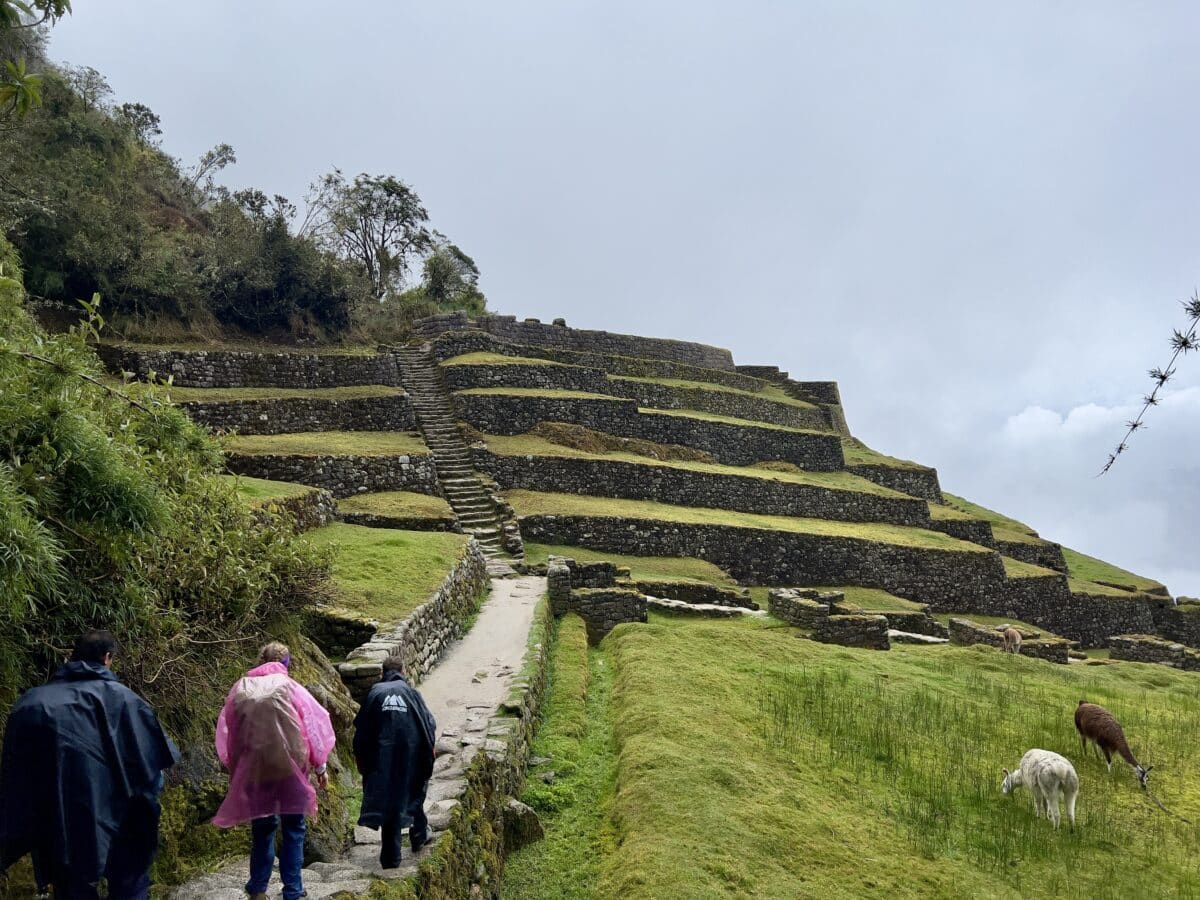
Clothes that are nice, but not a must.
- 1 Pair of Shorts. Some prefer to wear shorts when hiking. We never felt the need, as our hiking pants were lightweight enough, and Zac’s actually just zipped off.
- 2 T-shirts. The same with T-shirts. Some people prefer to hike in T-shirts. However, our long-sleeve hiking shirts kept us comfortable and protected us from bugs and the sun; we did not regret not packing T-shirts.
- 1 pair of waterproof pants to slide over your pants if you get caught in a rainstorm. These can also double as a layer if you’re cold in the mornings. If you’re hiking in the rainy season, I would say these are a must. However, this is optional during the dry season.
- 1 rain poncho This is not a bad idea to bring a rain poncho that covers your backpack. We did have one morning where it downpoured nonstop, and we were very grateful for our rain ponchos. They also don’t take up very much space. (Again, rainy season this is a must, dry season is optional.)
- 1 pair of lightweight shoes to wear around camp. Something like Crocs, flip-flops, or any other light slip-on shoes is a good idea. I used my Birkenstocks.
- A clean set of clothing for after you shower in Aguas Calientes. After you visit Machu Picchu at the end of your hike, you will likely go to your hotel in Aquas Calientes to shower. Having a clean set of clothing to change into is not a must, but it sure is nice!
Note: we used our packing cubes to keep everything organized. This is not a must, but we do think they are great when you are constantly moving to a new spot each night!
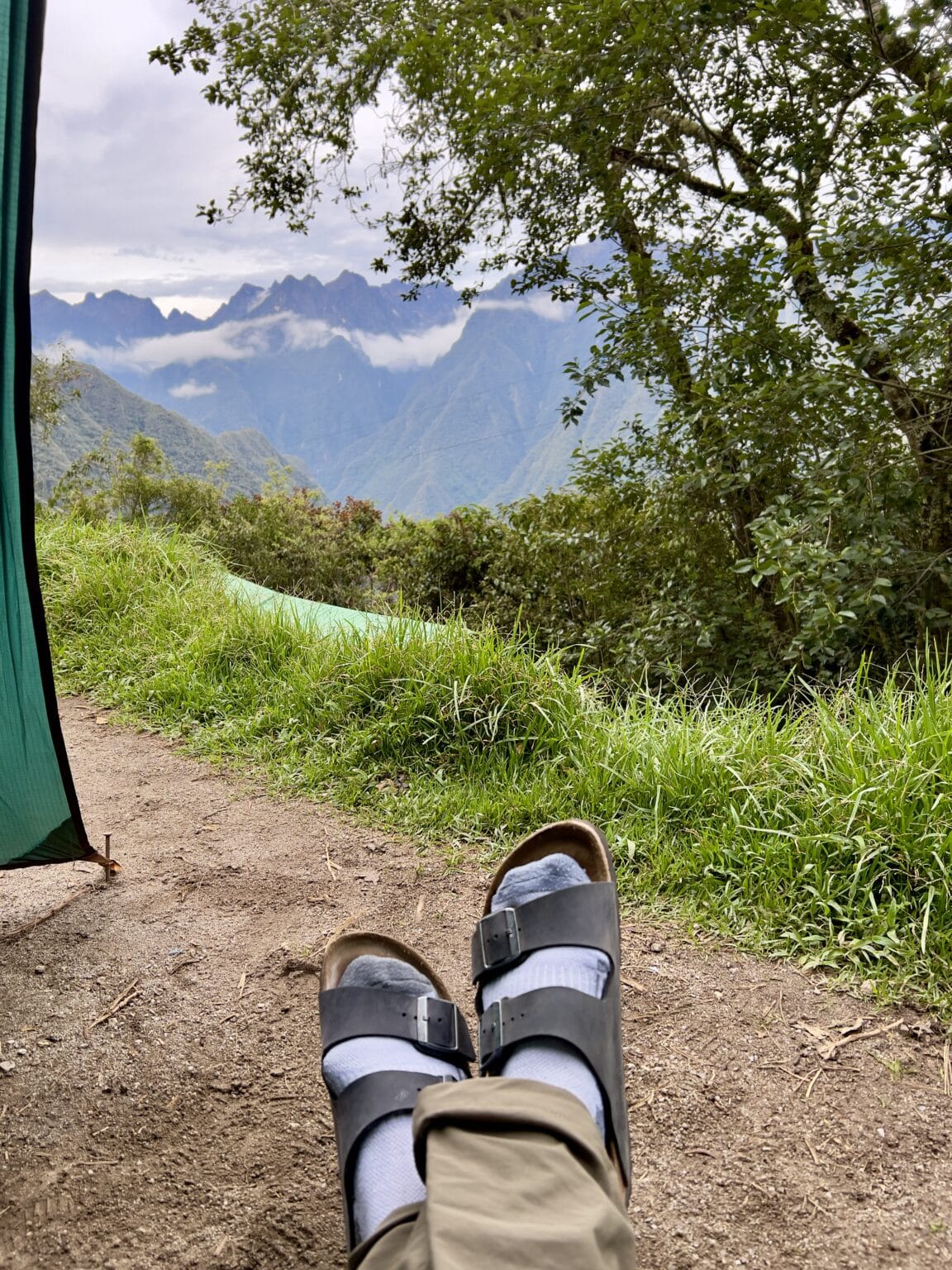
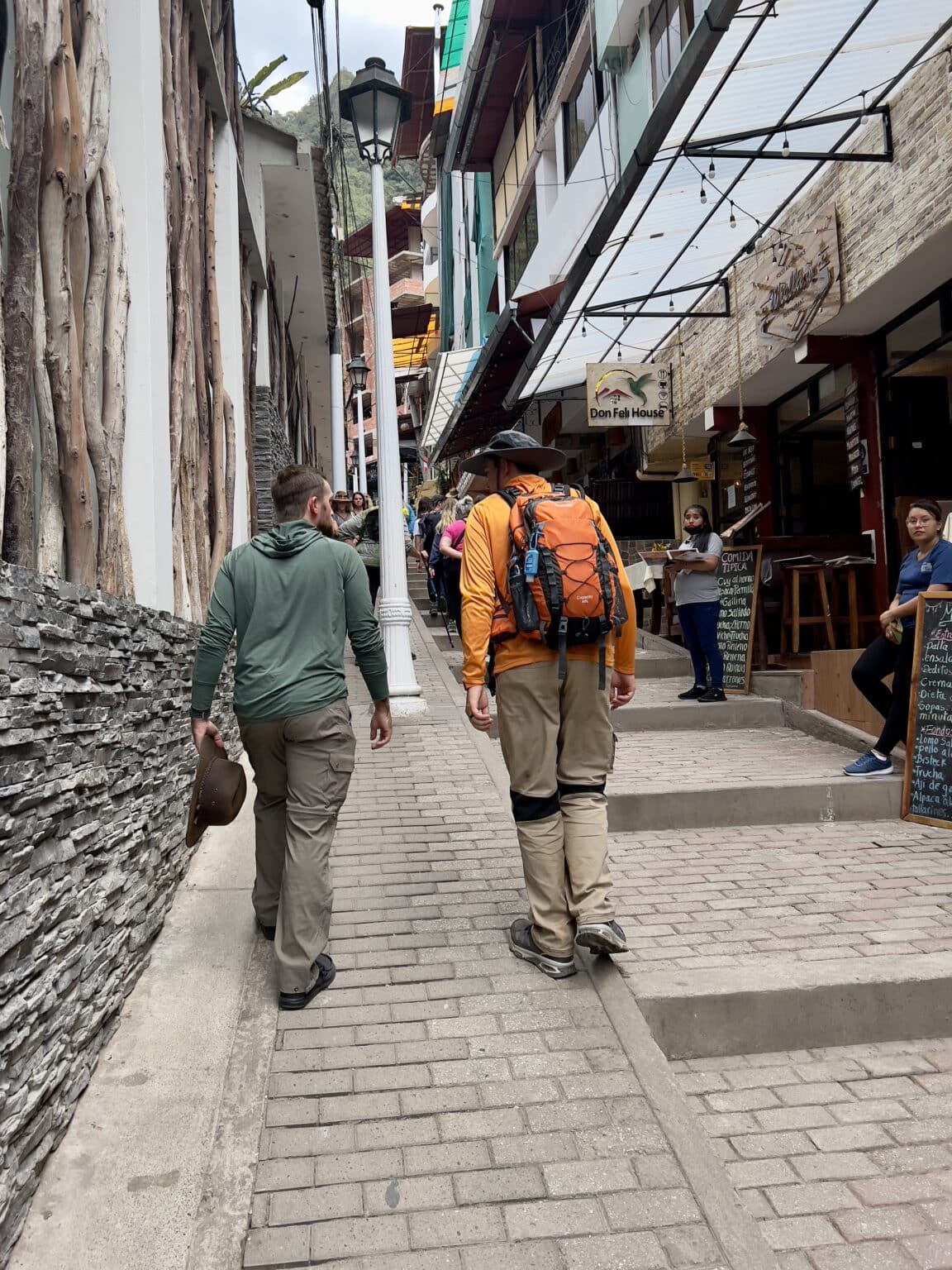
Gear for the Inca Trail
Sleeping Bag or Sleeping Bag Liner
Some tour companies do provide you with a sleeping bag (check with yours). Ours did, and they were really nice! However, my past experience with using sleeping bags provided by a tour company is that they can be pretty nasty. I would either invest in your own lightweight sleeping bag or get a liner. We used these liners.
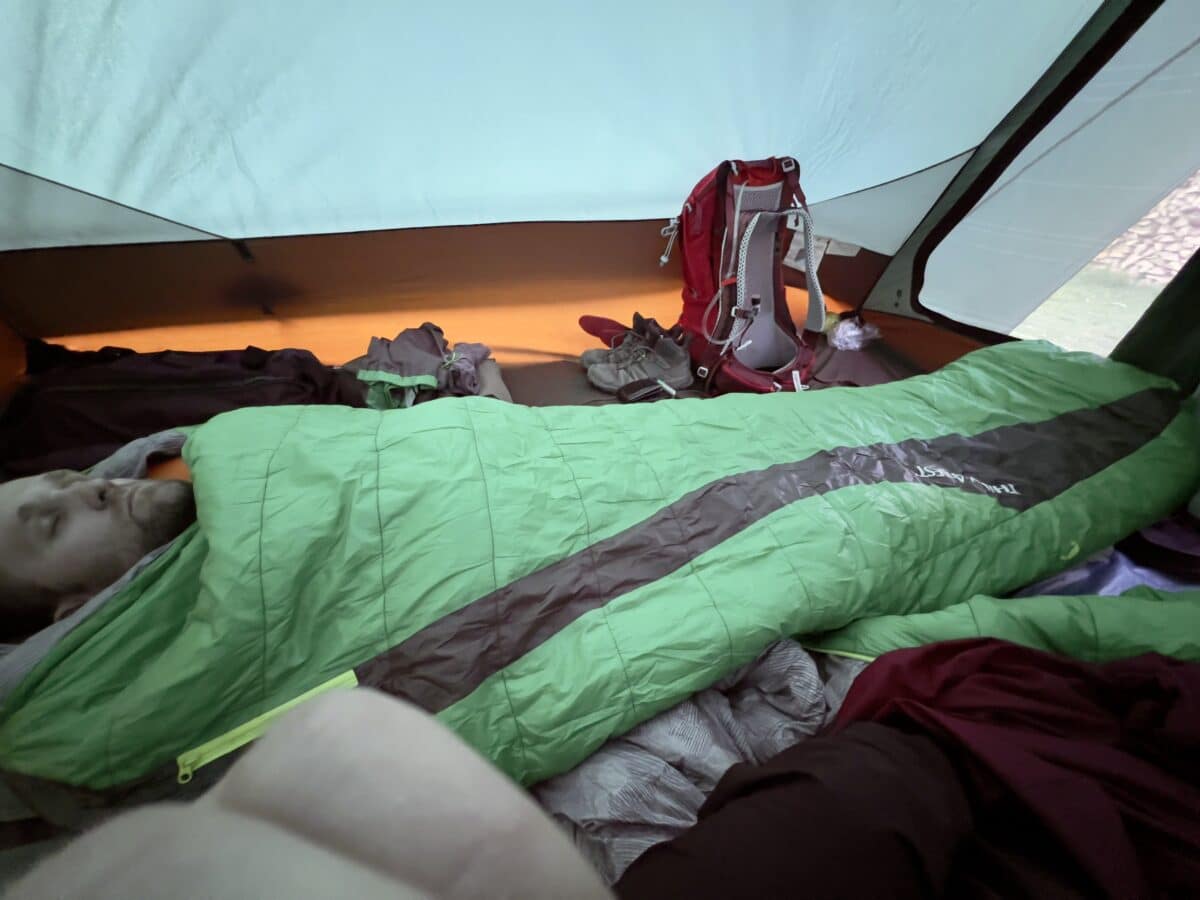
Headlamp
On your last day hiking the Inca Trail, you will start out before sunrise. So, having a flashlight is a must. I recommend a headlamp, though, so your hands are free.
Power bank and phone charger
Obviously, there will not be any plugins throughout the hike. So, having a battery pack for your phone and camera is a must. And don’t forget your charging cables!
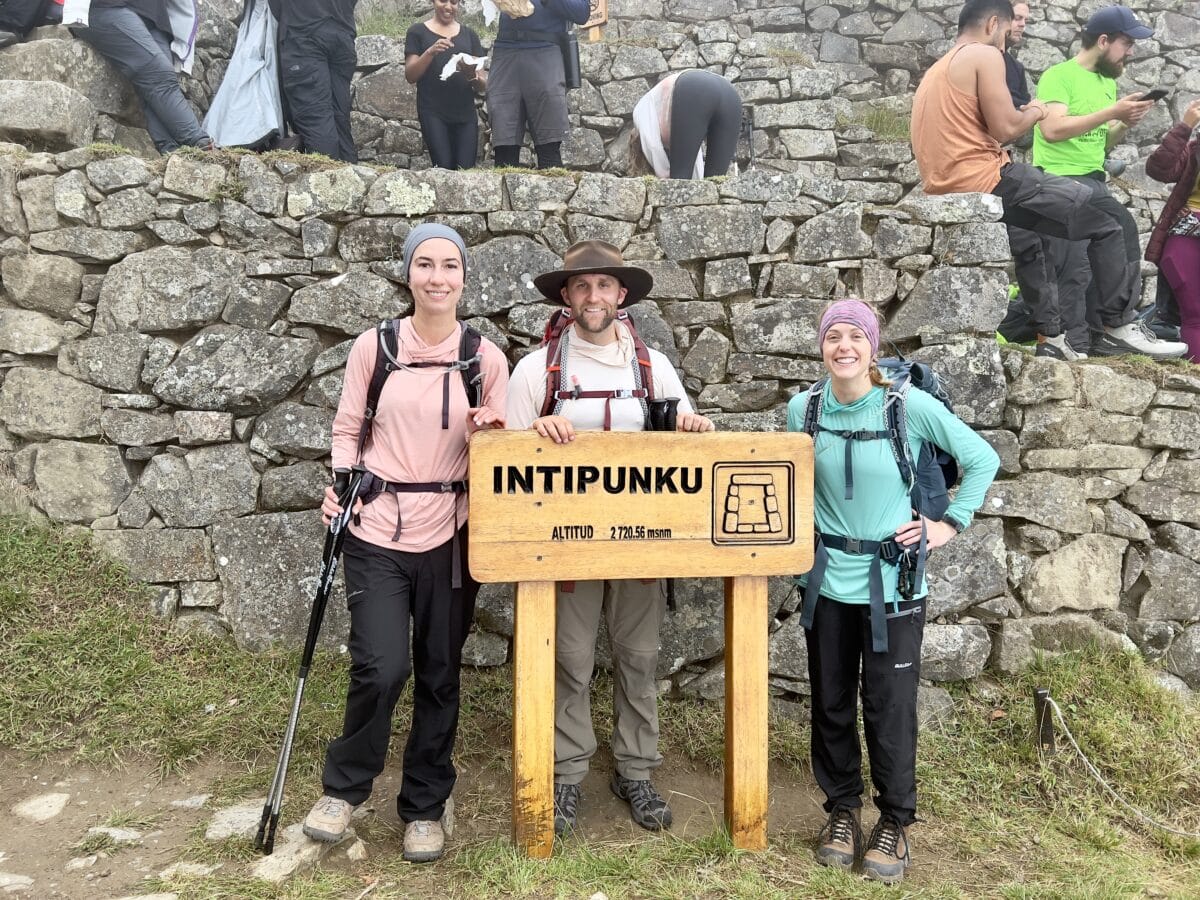
Toiletries to Bring for the Inca Trail
- Sunscreen
- Lotion
- Body wipes (Make sure they are biodegradable, like these)
- Deodorant
- Toothbrush and toothpaste
- Lip balm with SPF
- Hand sanitizer
- Bug spray
- Anti-itch stick
- Small first aid kit with bandaids, Neosporin, medications, ibuprofen, pepto, anti-diarrheal meds, etc.
For women, tampons or pads if needed. This might be TMI, but I do also recommend bringing along pantiliners, even if you don’t plan to get your period during the hike. Swapping out pantiliners can feel like having a whole new pair of undies on, and I personally felt cleaner this way.
Note: Leave the makeup in your suitcase in Cusco. You won’t need it on the trail! Sunscreen and lip balm with SPF will be the most coverage that you need.
Not necessary, but nice to have…
I also brought along these Neutrogena wipes to “wash” my face with each night. And then used my little Cetaphil lotion as a moisturizer. I also brought along a travel-size can of dry shampoo to keep my hair from getting crazy greasy.
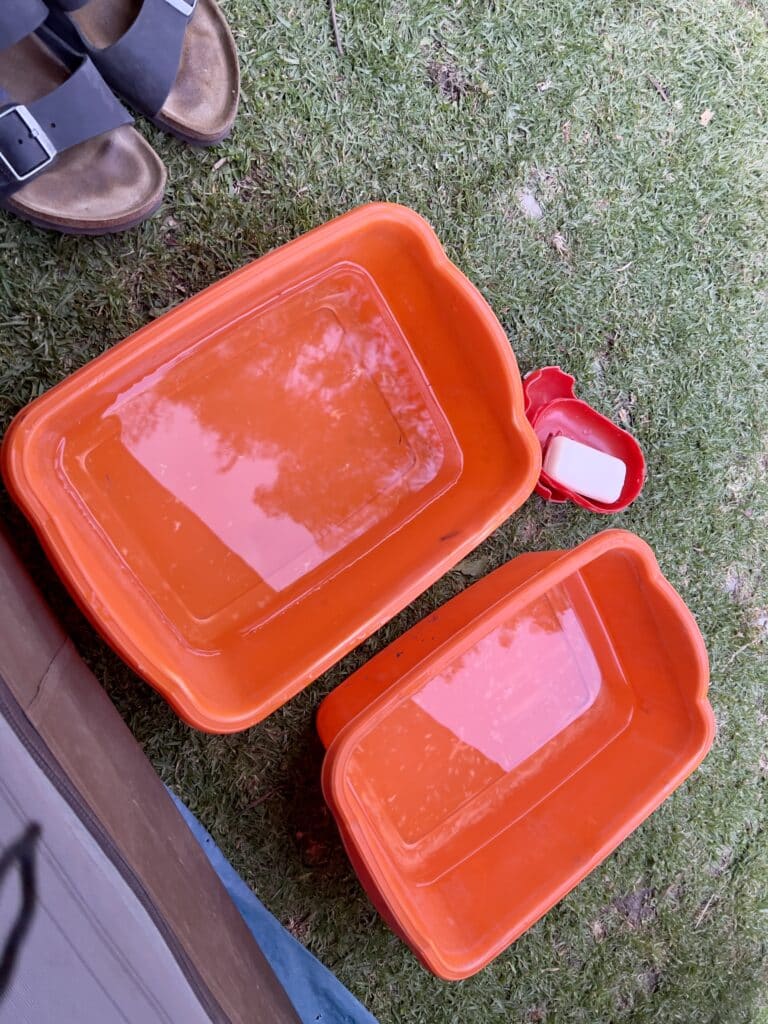
Note: Some packing lists say to bring soap, shampoo, etc. to shower with. There are cold water showers that some people use along the way. However, they were all closed when we did this hike, so none of us showered until we got to Aguas Calientes, and frankly, I don’t think I would have been up for a freezing cold shower at the end of the day when the temps were already in the low 40s Fahrenheit.
Our porters were awesome and gave us little bowls of water we could use for a “sponge bath” or to soak our feet in at the end of the day. We also just used these biodegradable body wipes as our showers and found them to be plenty to keep us fresh on the hike.
TOILET PAPER
This is one of the most important things you can pack! You are going to want to bring your own roll (or 2) of toilet paper and keep it in a Ziplock bag so it doesn’t get wet. There will be some outhouses along the way, and then the trail will also be your toilet.
Biodegradable dog poo bags
Dog poo bags are good to have along to put your toilet paper in if you need to use the trail as your toilet. (Or if you need to #2 along the trail…) I also like having them along to collect my trash throughout the hike. (Please don’t litter the trail!)
Other Must-Bring Items
Camera/phone
Something to capture your memories of the trail with! Phone cameras more than suffice these days to capture your travels.
I lugged along my big DSLR camera and lens, and I honestly think I took it out of my backpack twice on the trail and then when we got to Machu Picchu. Otherwise, I just used my phone.
Passport
You will need your passport with you in order to hike the Inca Trail. You go through a little checkpoint when you first enter the trail, and then you pass through another checkpoint on your last day. You NEED your actual passport along for this – not just a copy! I also recommend making sure it’s in a Ziplock bag to keep it from getting wet.
Cash
It’s good to have a little cash (Soles) with you on the trail. At some of the stops, you can buy snacks and other goodies. I believe one restroom also charged a small fee.
Stuff that is not a must-bring, but nice to have…
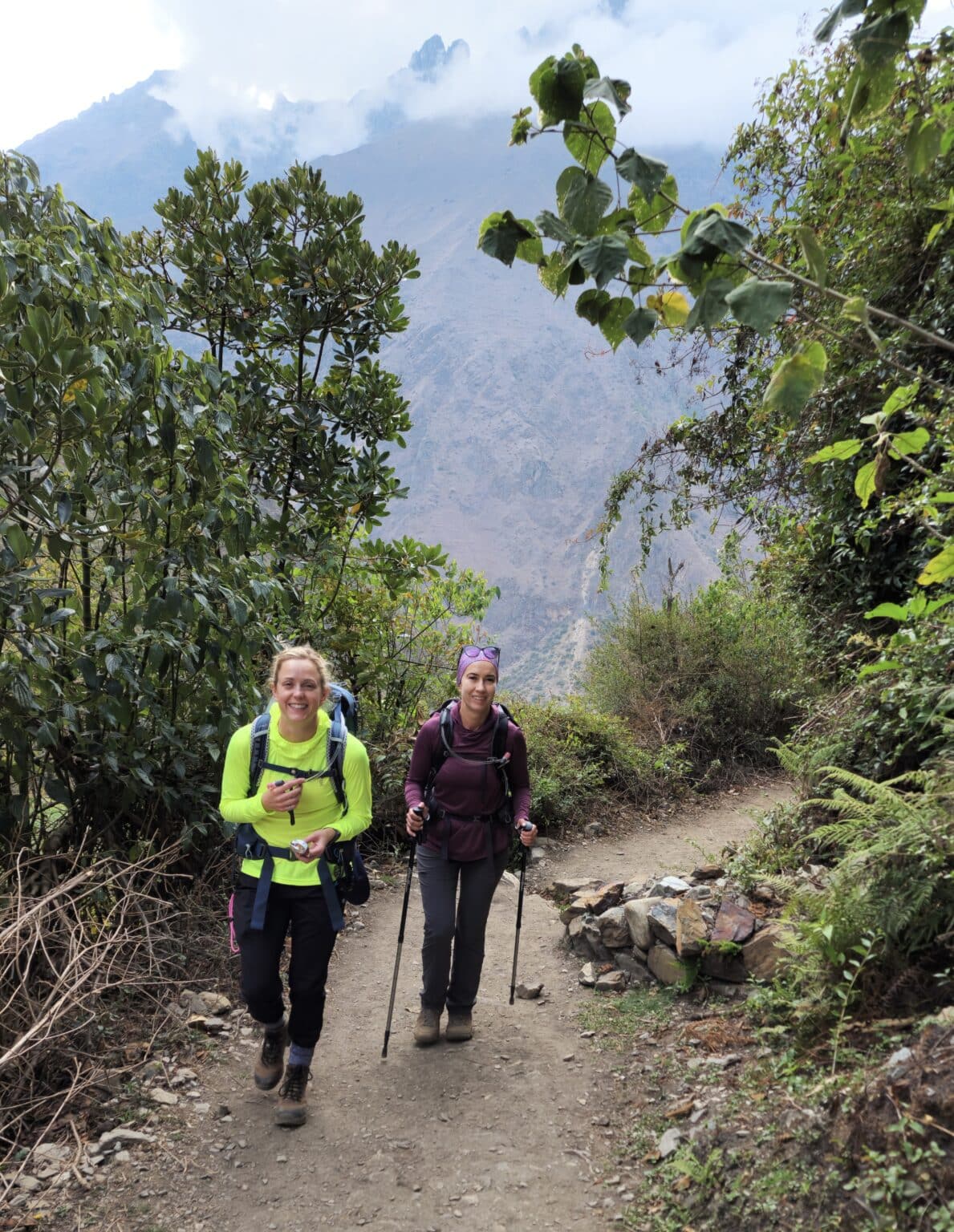
Hiking Poles
Now, you can absolutely do the Inca Trail without hiking poles. However, your knees will thank you if you have a set along. (I, personally, would not have been able to complete this hike without my hiking poles, as I have knee issues.) And if you do bring a pair, make sure they have rubber tips.
We used these Eddie Bauer poles. However, Black Diamond and Leki are also excellent brands of walking poles.
Female urinal
If you don’t want to squat to pee, these are nifty little things to bring along! Obviously, you can pee in the woods the old-fashioned way, but these come in very handy on hikes like this. The exact one I have is no longer available, but these are some similar options.
Note: there are outhouses along the way on the Inca Trail. You don’t always have to pee in the woods!
Camping pillow
Having an inflatable pillow each night was a lifesaver. I know some people have used their coats and fleeces as pillows and were fine. I debated putting this under the “not necessary but nice” category because I don’t think any of us would have been able to sleep without one of these. They are really convenient and surprisingly comfortable. These are the ones we used.
Microfiber towel
Having a small microfiber towel to dry off with after a rainstorm or after we “showered” was handy. Again, these weren’t a “must,” but they were nice to have and didn’t take up much space.
Altitude medicine
Not everyone will need this. I’ve visited Cusco multiple times now, though, and I knew the altitude would be an issue for me. (Heck, I had issues with the altitude when I was just in Denver!) So, I talked to my doctor and got a prescription for Diamox before I did this hike. It really saved me! But again, not everyone on the hike needed this. The most important thing you can do to combat the altitude is remember to go slowly and drink lots of water.
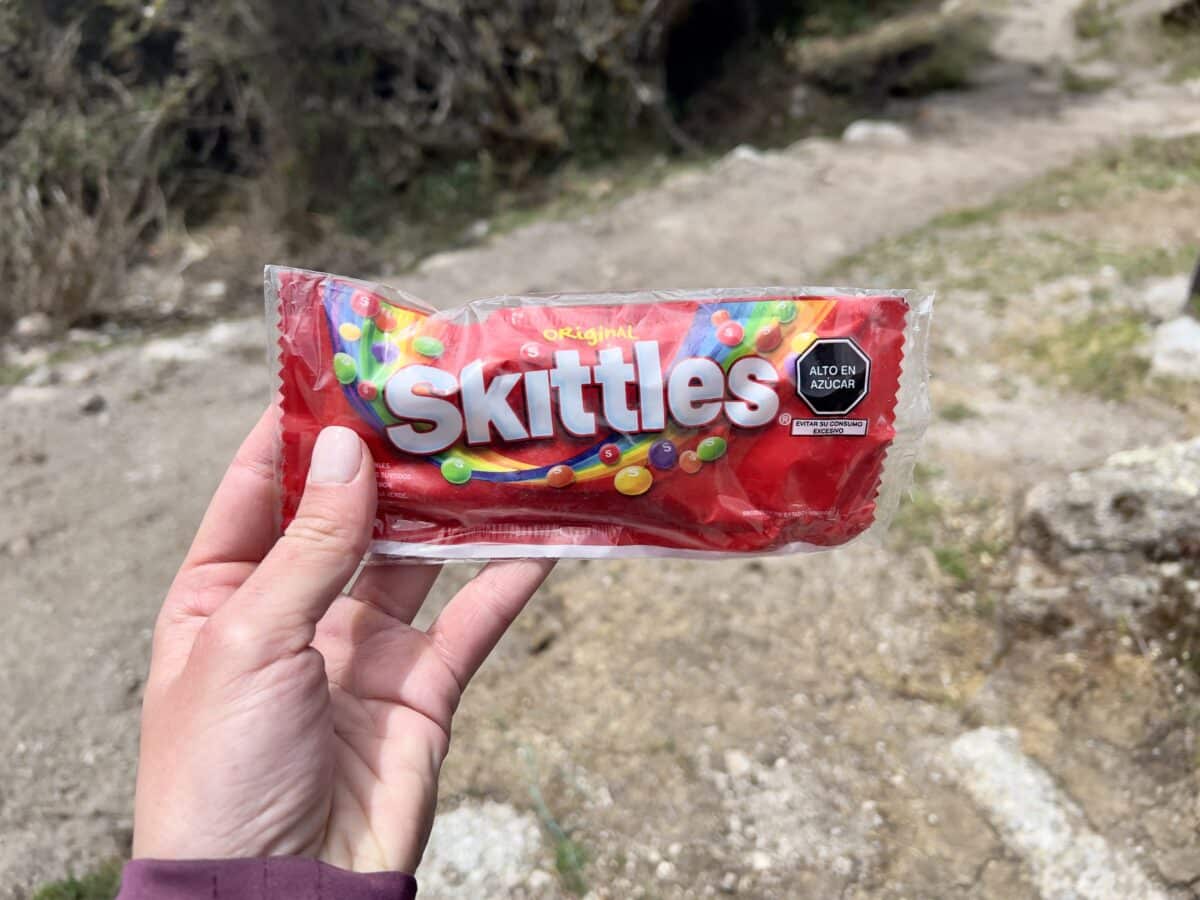
Snacks
Bringing along your favorite hiking snacks, such as granola bars, chips, candy, etc., can be a good idea too. However, the tour companies provide you with plenty of food, and many also give you snack bags to take along. So, this isn’t a must. You absolutely will not starve on this hike.
That said, I do wish I had packed a couple of my favorite treats for the hike. I happily paid the equivalent of $6 for a small bag of Skittles from a lady on the trail, and it was the best bag of Skittles I ever ate, haha.
Read more: The Inca Trail Hike to Machu Picchu – EVERYTHING You Need to Know Before You Book & Go!
If anyone has any questions about this Inca Trail packing list don’t hesitate to reach out in the comments!
Wondering what to bring with you for the rest of your trip to Peru? Check out my ultimate Peru packing list!
